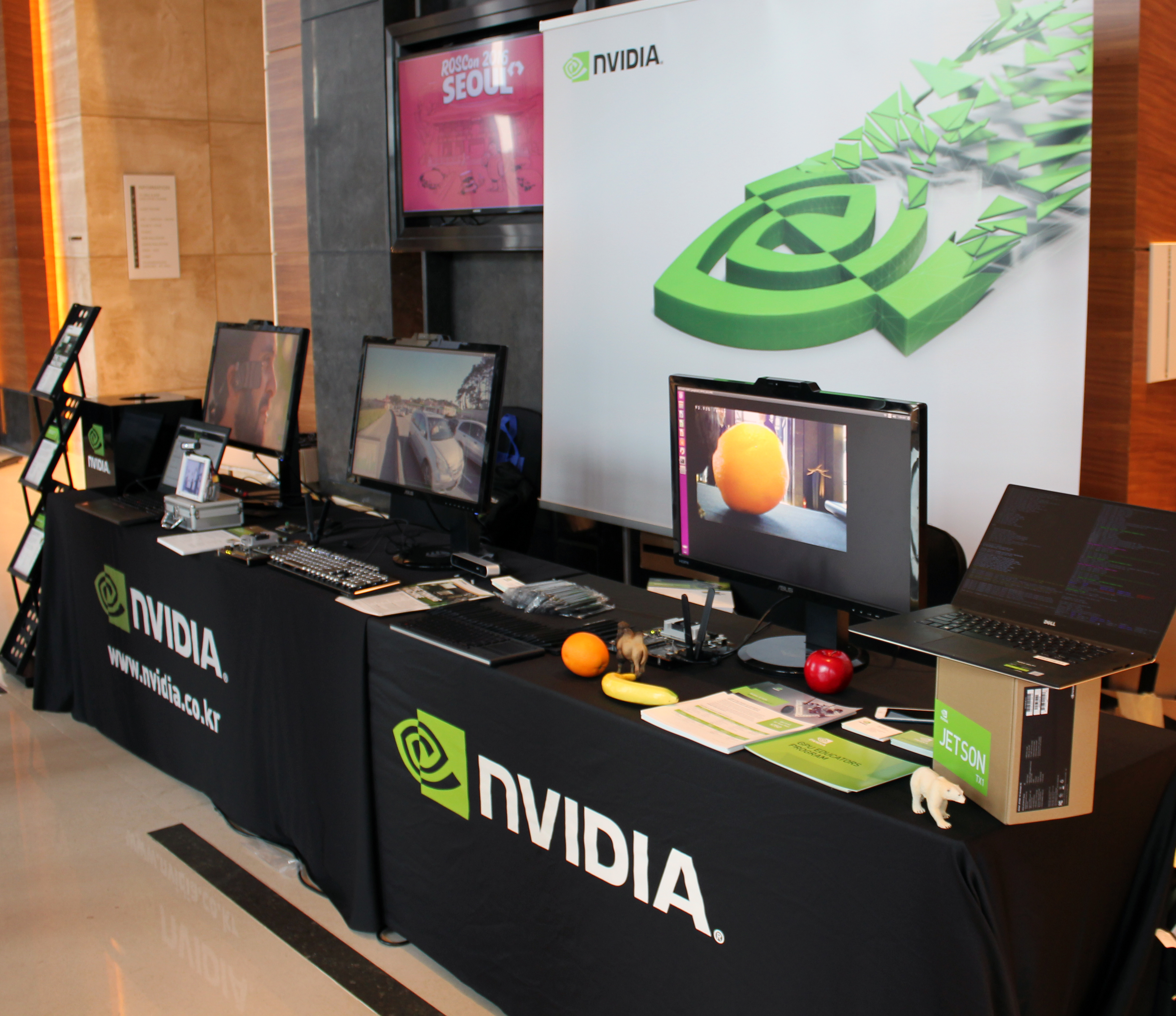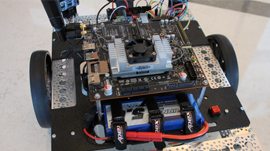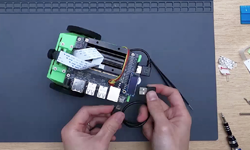The NVIDIA Jetson team was in Seoul, Korea last week at ROSCon. More than 450 attendees from across the globe trekked to the conference to learn and network with the ROS (Robot Operating System) community.
As a Platinum sponsor, and backer of the Open Source Robotics Foundation for the past three years, NVIDIA is a supporter of the ROS community and its international set of academic and entrepreneurial roboticists.

The Jetson team showcased a variety of demos including one focused on TensorRT, a GPU-accelerated inference library. Jetson intern, Ryan Beethe, wrote an ROS node for the Jet robot, a teaching kit co-developed with Cal Poly San Luis Obispo, and alternated apples and bananas in front of it. Running the GoogLeNet classifier on the ImageNet database, Jet was programmed to chase after the apples, and shun or run away from the bananas presented to its all-seeing webcam eye, much to the crowd’s delight. Other demos included scene captioning based on NeuralTalk2 and a Deep Visualization Toolbox, all running on Jetson. Two small form-factor Jetson TX1 carrier boards were on display, one from CTI and another from Auvidea, both suitable for size-constrained use cases such as drones.
A Global and Diverse Community
There were a variety of Jetson partners and applications at the show. Paris-based Parrot, showed off its S.L.A.M. Dunk developer-oriented drone computer vision add-on. It comes pre-installed with Ubuntu and ROS, runs on the Tegra K1, and is capable of real-time depth-from-stereo. In a highlight presentation, TUDelft presented their winning strategy in the Amazon Picking Challenge, deploying Chainer, FasteRCNN, and NVIDIA GPUs, complete with ROS-based simulation and control infrastructure. Intel presented a variety of RealSense depth cameras, which enable Jetson to use its GPU to process point clouds at best-in-class frame rates using the PCL library, a core ROS component.
Novice and expert roboticists alike were impressed by the Jetson TX1 because of the high classification frame rates made possible with TensorRT and JetPack 2.3. In addition, the Jetson module’s small form factor and compact carrier boards from Auvidea and CTI enable small footprint rovers and drones to host Jetson brains, great for scene-captioning and pedestrian detection.
With the backing of partners and presenters such as Bosch, DJI, Fetch Robotics, and ETHZurich, the ROS community proved itself stronger than ever; and Jetson’s awareness among the robotics community has reached an all-time high. Now it’s up to the brilliant roboticists around the world to pool their expertise to build ground-breaking AI-powered robots.
Learn more about the Jetson Developer Platform >
Deep Learning and ROS Collide to Bring New Levels of Autonomy to Robots
Oct 17, 2016
Discuss (0)

Related resources
- GTC session: Introduction to AI-Based Robot Development With Isaac ROS
- GTC session: Training Robot Behavior at Scale in the AWS Cloud With the NVIDIA Isaac Robotics Platform
- GTC session: The Nuro Driver: An AI-First Autonomous Driving System
- SDK: Isaac SDK
- SDK: Isaac ROS
- Webinar: Use Your Own CUDA ROS Node with NITROS on NVIDIA Jetson









